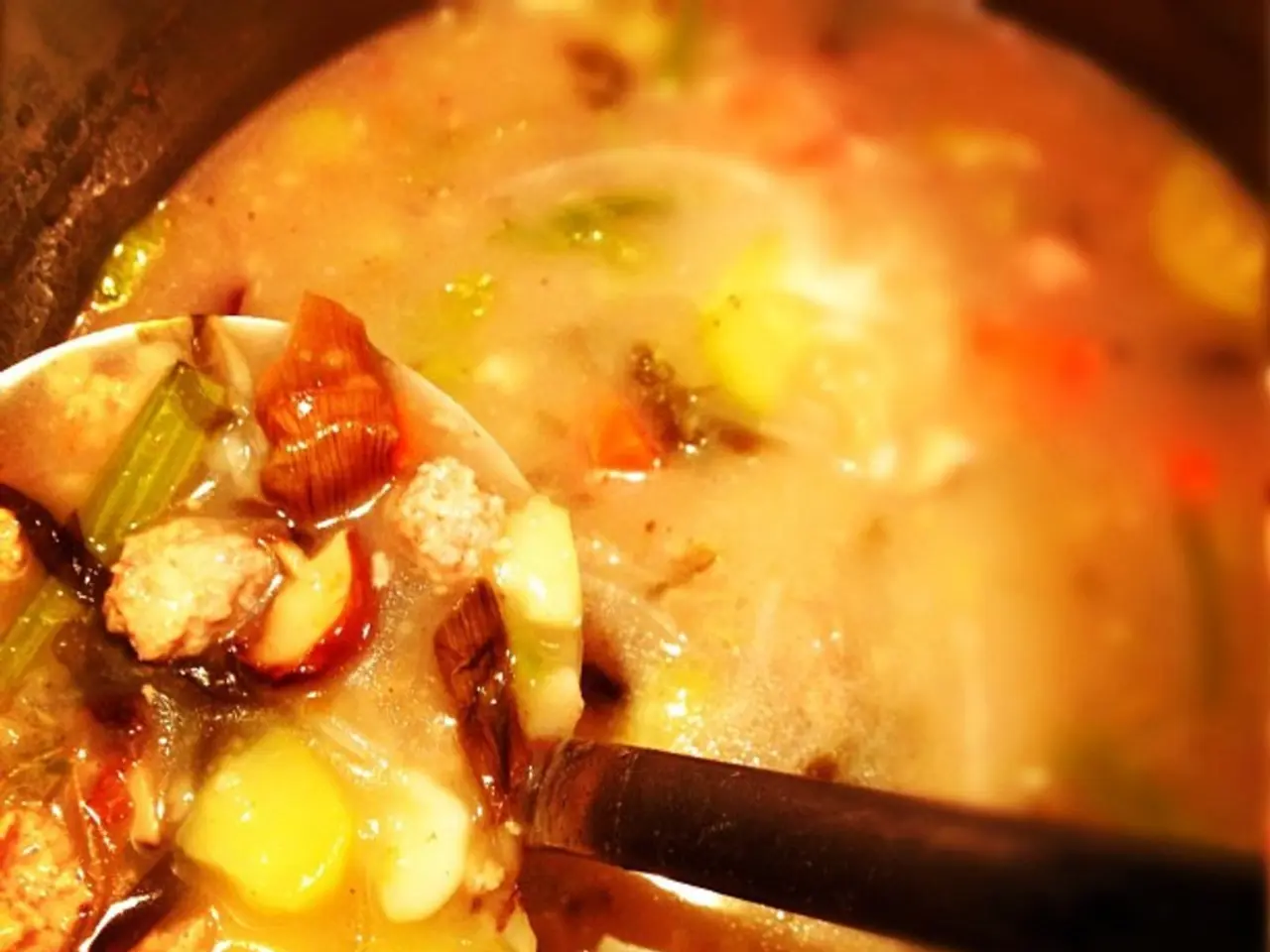Desi Ghee's Resurgence in Contemporary Indian Eateries
In the heart of Covent Garden, Paro Indian Covent Garden offers a luxurious Indian dining experience that combines luxury with a taste of home. This unique culinary journey is largely due to the restaurant's use of desi ghee, a traditional Indian clarified butter, in their dishes.
Chef Niaz Khan, the mastermind behind Paro's mouth-watering curries, believes that every ingredient should provide health benefits. He prepares his masalas from scratch, spends hours simmering sauces, and uses only genuine desi ghee. This commitment to authenticity has earned Paro a reputation as one of Covent Garden's top Indian eateries.
Desi ghee offers a richness that modern oils and fats lack, and it enhances the aroma and mouthfeel of traditional recipes. It is simmered until the milk solids separate, leaving a golden ghee behind. This process not only gives ghee its distinctive aroma but also makes it suitable for cooking without producing toxic chemicals.
The use of desi ghee aligns with the broader trend towards food experiences that emphasize tradition, memory, and cultural identity. Chef Niaz Khan's cooking at Paro Indian Covent Garden evokes the rich, traditional flavors of Indian cuisine, offering diners a more authentic experience that stands out from typical westernized curries.
Desi ghee is also becoming popular again in London’s Indian kitchens due to a revival of interest in traditional, authentic Indian cooking methods and ingredients that emphasize rich flavor and cultural heritage. Ghee's nostalgic and Ayurvedic value, along with its distinctive taste and aroma, is fueling its renewed use in fine Indian dining as well as home cooking.
One of the health advantages of desi ghee is that it contains conjugated linoleic acid (CLA) which may help lower inflammation. It is also lactose-free, making it suitable for some people with dairy intolerance. This makes it an ideal substitute for margarine or seed oils, particularly when preparing Indian cuisine.
At Paro Indian Covent Garden, desi ghee allows the spices to blossom, creating layers of taste, and results in food that tastes as though it was prepared with care. Each spoonful of curry offers a rich flavour in addition to heat, and it leaves a lasting warmth instead of an oily aftertaste.
It is clear that desi ghee plays an important role in the evolution of Indian food in London and at Paro Indian Covent Garden. Its return to prominence is a testament to the enduring appeal of authentic Indian cuisine and the desire for a culinary experience that connects diners to their cultural roots.
Read also:
- Digestive issues: Understanding causes, remedies, and further details about acid reflux and excessive burping
- Exploring Botox as a Treatment for Interstitial Cystitis: Insights, Adverse Effects, and Further Details
- Risk Factors for Developing Penile Cancer
- Linking brain weakness and cognitive decline: An examination of the potential relationship





